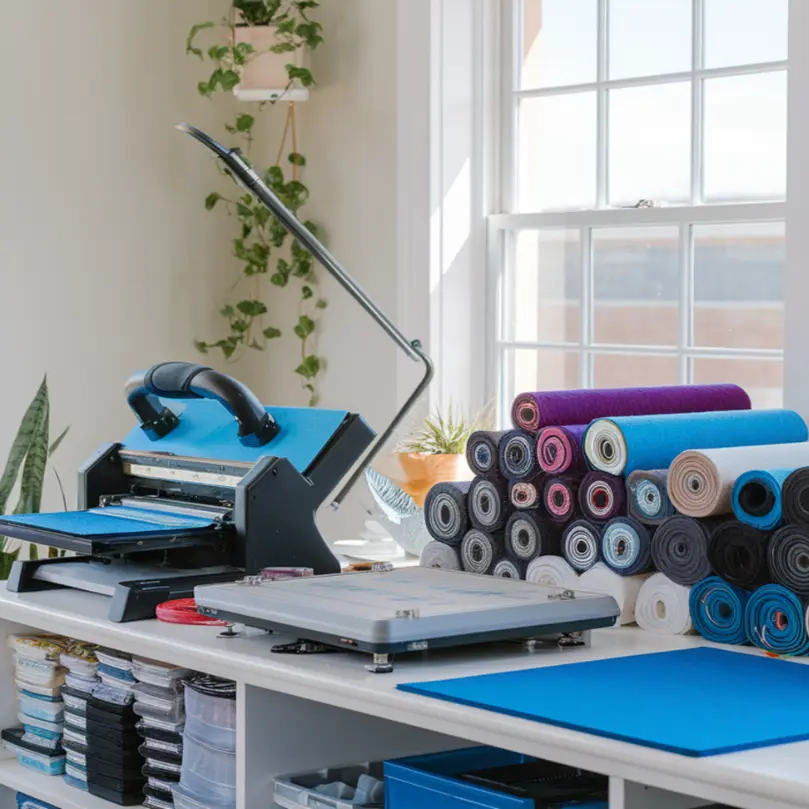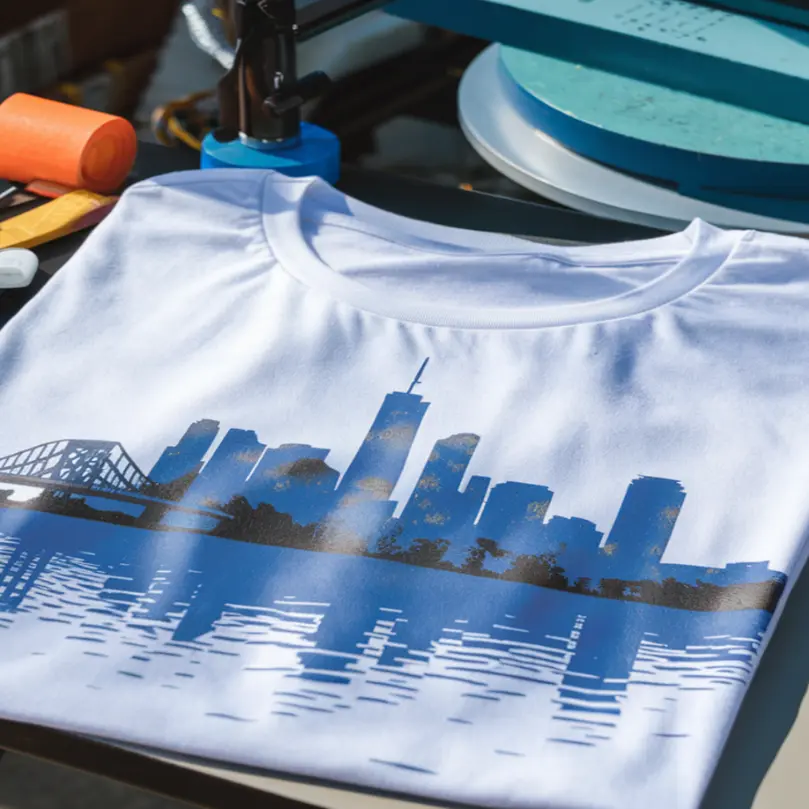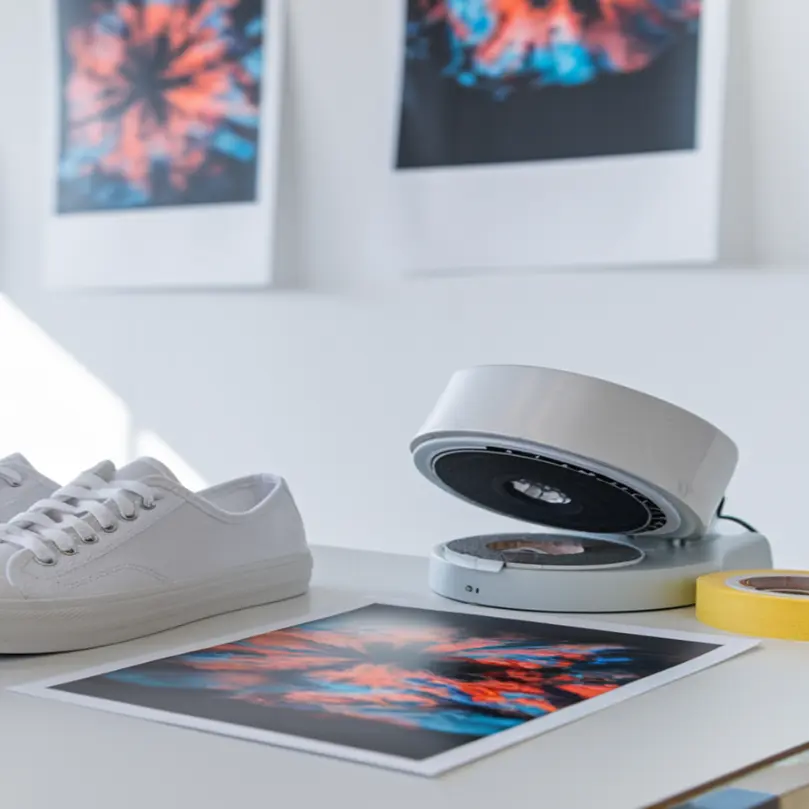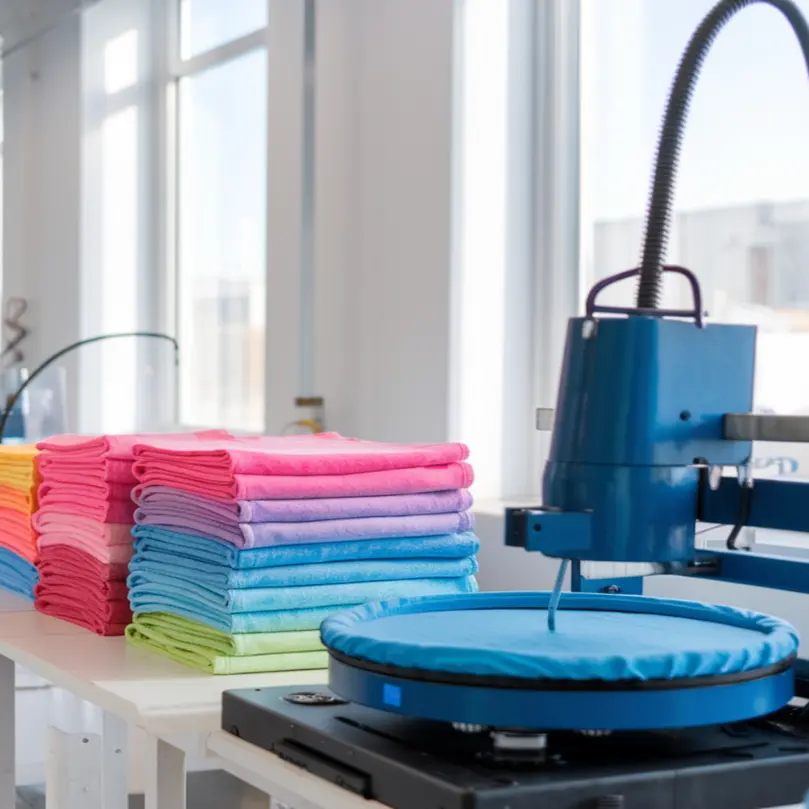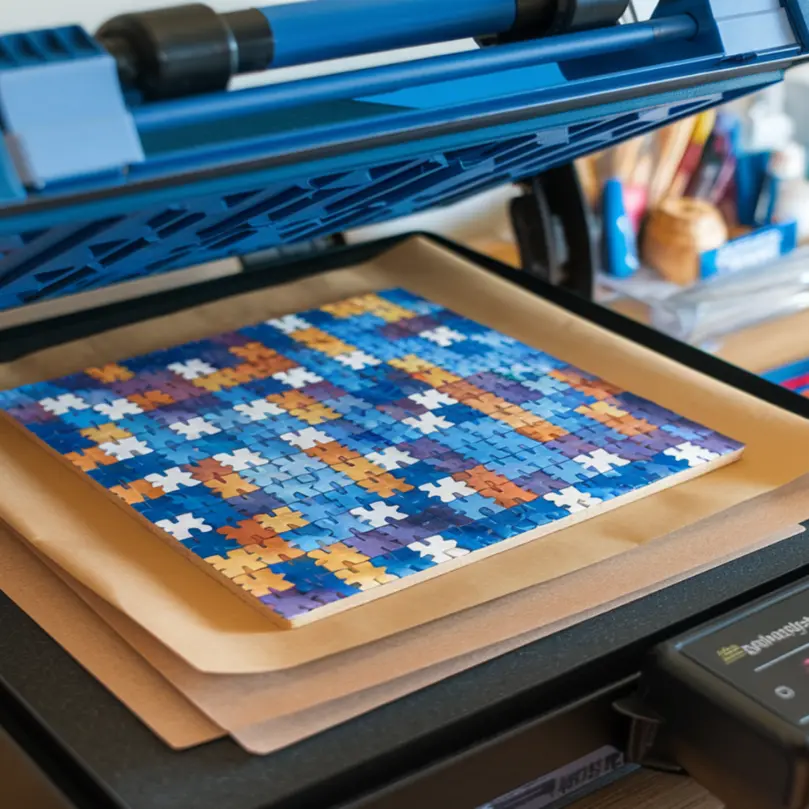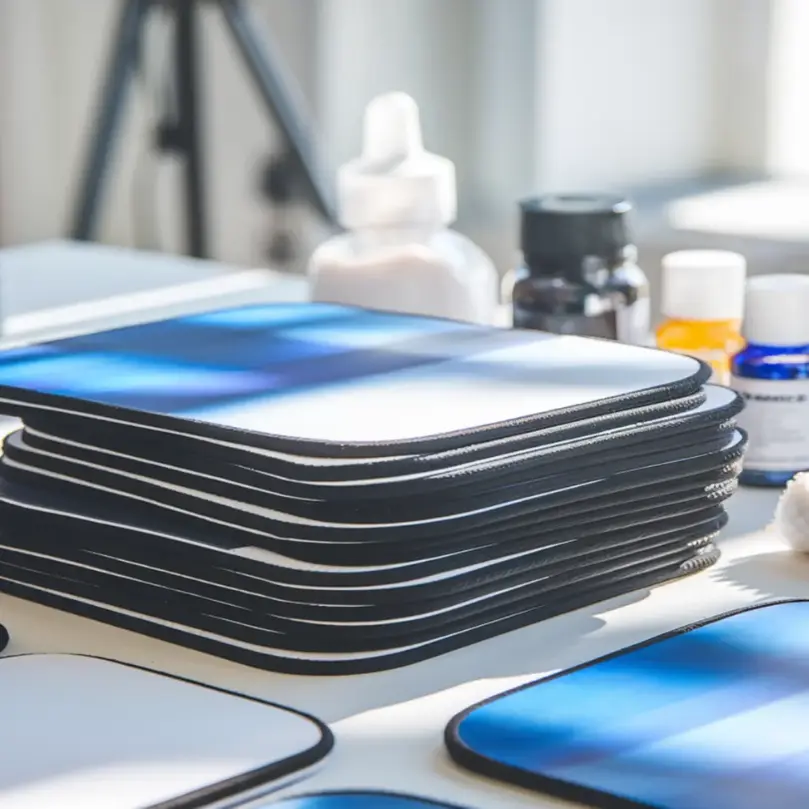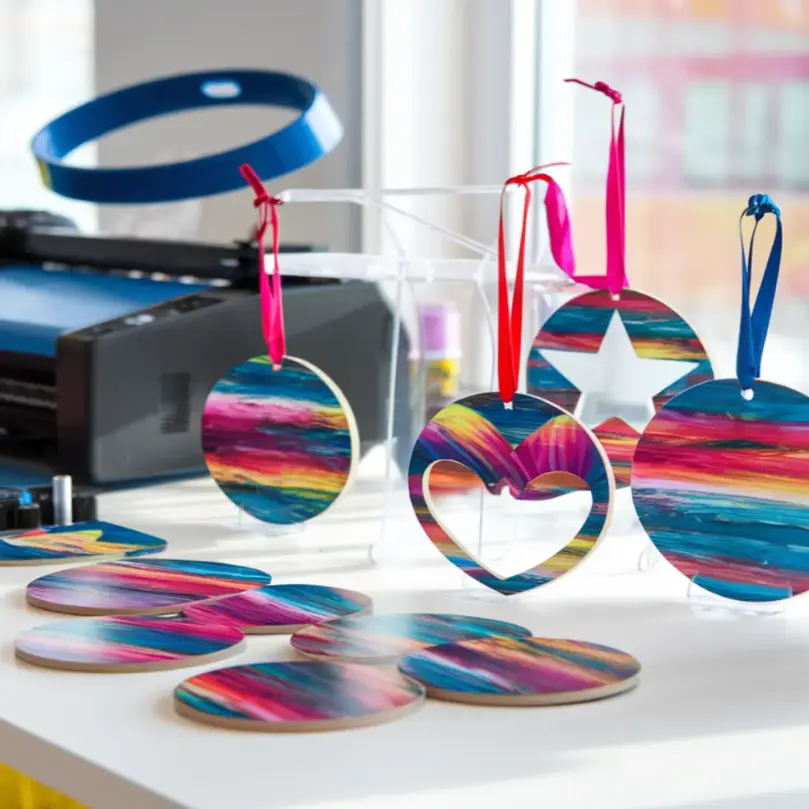Table of Contents
ToggleNavigating the wide array of all over sublimation printer options can be daunting, but with the right information, making an informed decision becomes straightforward. This no-fluff article cuts through the complexities—featuring in-depth advice on selecting an all over sublimation printer that meets your all over printing demands. Join us as we examine the critical specs, understand different models, and hone in on the all over sublimation printer that will consistently deliver the impressive, vivid prints you envision. Join us on this exciting sublimation adventure!
Key Takeaways
- Selecting the right all over sublimation printer involves understanding key specifications like ink type, DPI, and print size, which impact output quality and efficiency.
- Preparing for all over sublimation printing entails setting up a well-organized workspace, choosing the correct heat press size, and gathering necessary accessories like sublimation ink, paper, and heat-resistant tape.
- Mastering sublimation printing techniques includes creating custom designs, properly transferring these onto garments, troubleshooting common issues, and exploring other printable items to expand your product range and potentially grow a business.
Choosing the Right All Over Sublimation Printer

In the world of sublimation printing, the choice of your sublimation printer can be a make-or-break decision. The best sublimation printers can transform your designs into vibrant prints with high precision and color accuracy. In contrast, an unsuitable printer might not provide you with the quality or efficiency you desire. So, how do you choose the best sublimation printer for your needs? You can also read our guide on sublimation printer reviews for all levels.
Your journey begins by grasping the specifications of sublimation printers. Factors such as the type of ink used, color accuracy, and resolution significantly influence the quality of your output. For instance, a printer with a higher resolution represented by DPI (dots per inch) tends to deliver superior print quality. Investing in a printer that comes with accessories tailored to these specifications can greatly enhance your printing capabilities and streamline efficiency.
Best Sublimation Printers for Full Coverage Designs
Having emphasized the significance of selecting an appropriate printer, let’s explore some of the best dye sublimation printers for full coverage designs. If you’re a beginner looking to create sublimation shirts, the Sawgrass SG500, DNP DS620A, and Epson SureColor SC-F170 are excellent options. These printers are not only user-friendly but also known for their exceptional color accuracy and larger print sizes, which are essential for all over sublimation printing.
For full coverage designs, the Epson EcoTank 15000 and the Sawgrass Virtuoso SG400 come highly recommended. These printers can handle larger print sizes, essential for creating large-scale designs, especially for t-shirt sublimation printing. Remember, the key to achieving stunning full coverage designs lies in choosing a printer that matches your printing needs and budget.
Understanding Sublimation Printer Specs
To fully exploit the potential of your sublimation printer, you must comprehend its technical specifications. Key specs that you should consider include:
⫸ Click Here For Best Selling Sublimation Printers And Products ⫷- Printing-field size: A printer with a larger printing-field size allows for larger prints.
- Number of ink colors: A printer with more ink colors can produce more vibrant prints.
- Printing speed: Consider the printing speed of the printer.
- Cost: Take into account the cost of the printer.
Understanding these specifications will help you make an informed decision when choosing a sublimation printer.
Another important specification to consider is DPI (dots per inch), which refers to the printer’s resolution. A higher DPI leads to slower printing but delivers higher quality results, crucial for creating a sublimation t-shirt. On the other hand, a lower DPI can speed up the process while still maintaining decent quality.
Moreover, the type of ink used can also influence the output of sublimation printers by enhancing color saturation, pattern fineness, and dye transfer rate. By understanding these specs, you can make an informed decision when choosing your sublimation printer.
Preparing Your Workspace for All Over Printing

After selecting the appropriate printer, the next step is to set up your workspace for all-over printing. A well-organized workspace can significantly contribute to a positive and productive work environment by enhancing efficiency, prioritizing safety, and consistently producing high-quality prints.
To create the ideal workspace for sublimation printing, follow these steps:
- Place your computer and heat press on top of your workspace.
- Keep your printer on a separate shelf or surface to safeguard it from heat and ensure easy access.
- Gather essential accessories like sublimation ink, a heat press, sublimation paper, and heat-resistant tape for successful all-over sublimation printing.
Heat Press Selection for Larger Prints
In the realm of all-over sublimation printing, the size of your heat press plays a significant role. If your printer can handle 13 by 19 inches, it’s recommended to use a heat press that is at least 16 by 20 inches. This ensures that the heat press can accommodate the entire print area, leading to seamless print alignment and high-quality prints.
The right heat press offers several benefits:
- Ensures even heat distribution, which is crucial for the sublimation process
- Allows prints to have vibrant and sharp colors
- Maintains even heat distribution
- Provides safety measures to avoid burns, such as heat-resistant gloves or protective tools
Always be cautious around hot surfaces and prioritize safety.
Necessary Accessories for Sublimation Printing
Beyond the sublimation printer and heat press, numerous additional accessories are required for successful all-over sublimation printing. These include sublimation ink, sublimation paper, and heat-resistant tape.
Sublimation ink, also known as disperse dyes, is perfect for dye sublimation printing as it can go from a solid state to a gaseous state in high temperatures and easily bond to polyester fabrics. Meanwhile, specialized sublimation paper ensures vibrant and high-quality results compared to regular copy paper and cardstock. Lastly, heat-resistant tape is crucial for securely attaching the print to the substrate during the dye sublimation printing process.
Crafting Custom Designs for All Over Prints

With your setup complete, the following phase involves creating your custom design for all-over prints. Having a custom design concept guarantees a one-of-a-kind and flawless print that spans the entire garment. The design should be meticulously thought out to perfectly complement the garment’s contours, resulting in a polished and professional look.
Creating a design concept for all over sublimation printing involves the following steps:
- Generating design ideas
- Selecting a graphic design tool
- Reviewing sublimation guidelines
- Using a graphic interface to upload and place your custom design on the shirt template
By mastering these steps, you can create stunning sublimation print designs that are perfect for all over sublimation printing.
From Concept to Transfer: Designing for Sublimation
The process of conceptualizing a design for sublimation printing can be quite exhilarating. Here are the steps to follow:
- Embrace your design ideas and let your creativity flow.
- Choose a graphic design tool like Canva, Photoshop, or Printful Design Maker to bring your vision to life.[1]
- Take a moment to review the sublimation guidelines provided by your printing service.
Next, you’ll need to save your print files in the PNG format. You can easily do this using Photoshop or Paint. At this point, your design is ready for printing on special sublimation paper with sublimation ink, and then transferred onto the garment through heat pressing. This process ensures a vibrant, high-quality print that you’ll absolutely love!
Editing Software Options for Sublimation Projects
Utilizing appropriate editing software can elevate your sublimation design creation. Whether you are creating custom candle jars by sublimation or craft beautiful sublimation tumblers, there are several amazing options available, including:
- Inkscape
- Adobe Photoshop
- Adobe Illustrator
- Affinity Photo
- Affinity Designer
Each of these tools offers a unique set of features that can enhance your design process.[2]
For instance, Adobe Photoshop offers a diverse range of tools for manipulating designs and provides numerous options for optimizing settings for sublimation printing on various materials, such as polyester. On the other hand, free software like GIMP is also a fantastic option for sublimation projects. By exploring these software options, you can find the one that best suits your design needs and skill level.
The Sublimation Process: Step-by-Step Guide for All Over Prints

With your design in place, it’s time to commence the sublimation process. This involves printing your design onto special sublimation paper with sublimation ink and then transferring the design onto the garment through heat pressing. This process ensures a vibrant, high-quality print that is not only beautiful but also durable and long-lasting.
The sublimation process is quite straightforward, but it requires careful attention to detail to achieve the best results. From choosing the right printer settings to ensuring the correct alignment and pressure during heat pressing, every step plays an important role in the final quality of your sublimated print.
Printing Your Design on Special Sublimation Paper
Transferring your design onto special sublimation paper constitutes an essential stage in the sublimation process. To ensure a fantastic high-quality print, it’s important to:
- Check your ink levels and optimize your printer settings according to the sublimation paper’s requirements
- Use high-quality sublimation ink and paper
- Adjust to appropriate temperature levels
Following these steps will contribute to a superior print output.
When loading your sublimation paper into the printer, follow these steps:
- Make sure that the printer is set up for sublimation printing.
- Carefully place the sublimation paper into the printer tray for seamless use.
- Once your design is printed, it’s ready to be transferred onto your chosen substrate.
Aligning and Pressing the Printed Design
Once your design is printed on sublimation paper, the following task is to align and press the printed design onto your garment. This process involves creating a centering line on your t-shirt and using the center of the collar as a reference point to place your design symmetrically.
The pressing times and temperature for the heat press are crucial for achieving the best sublimation results. Typically, a sublimation design should be pressed for a range of 40 to 75 seconds at a temperature of 400°F.
Once the design is pressed onto the garment, you’ll have a vibrant, high-quality sublimated print that’s ready to wear!
Advanced Techniques for Seamless All Over Sublimation
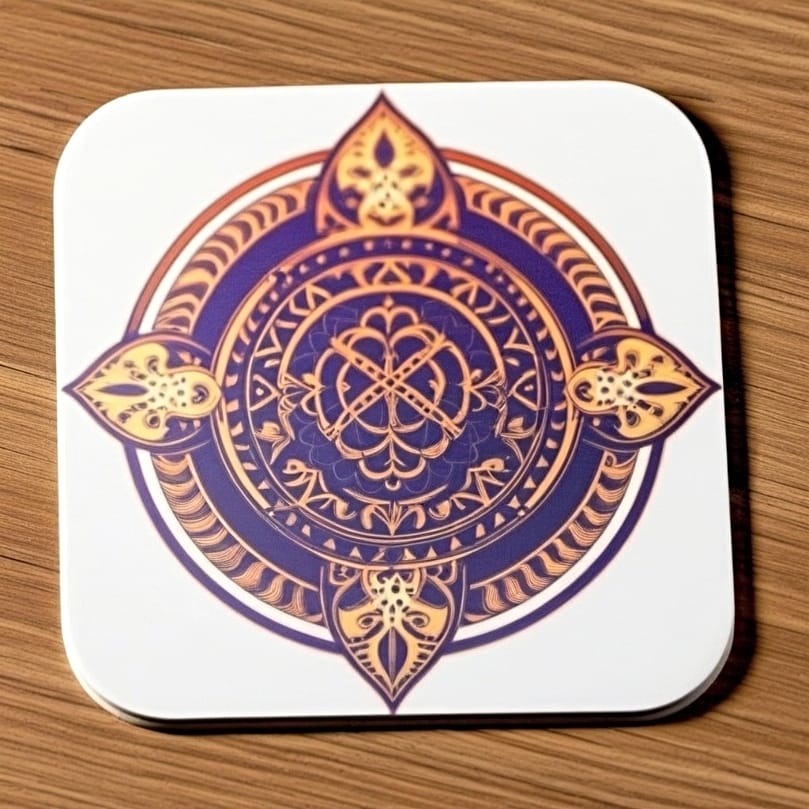
As your expertise in sublimation printing expands, you may wish to investigate advanced methods to refine your all-over sublimation prints. These techniques involve addressing common issues such as banding, moisture, and ghosting, and using specific strategies to eliminate these issues.
For example, to eliminate banding, you can adjust your print settings, clean your printhead, and ensure proper printhead alignment. Similarly, to avoid ghosting, make sure to securely tape the sublimation transfer paper to the substrate during the heat pressing process. By mastering these advanced techniques, you can ensure flawless all over sublimation prints without any white gaps.
Handling and Care for Sublimated Shirts
Sublimated shirts are not just aesthetically pleasing, but also boast durability and longevity. However, to ensure their longevity, proper handling and care are necessary. When washing sublimated shirts, it’s best to machine wash them in cold water and inside out, using mild detergent. Dark colors should be washed separately to prevent color bleeding. Understanding the correct washing of sublimation shirts is crucial for sublimation hobbyists.
If you need to iron your sublimated shirts, remember to iron them inside-out on a flat surface and avoid ironing over any holes or uneven areas to protect the print. When storing your sublimated shirts, keep them in a cool, dry place, like a closet or drawer, and avoid folding the shirt to prevent any damage to the print.
Expanding Beyond T-Shirts: Other Sublimation Blanks
Although t-shirts are a favored choice for sublimation printing, there’s room to experiment with a host of other items. From mugs and tumblers to ornaments and coasters, the possibilities are endless. These items not only allow you to expand your product range but also offer exciting creative opportunities.
When printing on other items, keep in mind that the steps and considerations might be slightly different from those for t-shirt sublimation printing. For instance, you need to consider:
- the dimensions and cutting of the sublimation paper
- use the correct equipment like a dedicated heat press
- ensure the appropriate side of the blank is used
By expanding beyond t-shirts, you can truly make the most of your sublimation printer and unlock its full potential.
Troubleshooting Common Issues with All Over Sublimation Prints
Despite meticulous preparation and techniques, you might still encounter typical problems with all-over sublimation prints. These include banding, inconsistent color, and ghosting. But don’t worry, these issues can be easily resolved with a few troubleshooting steps.
For instance, to eliminate banding, you can adjust your print settings and clean your printhead. To fix inconsistent color, check for clogs in the printer and print a nozzle check to identify any clogs, then follow the necessary steps to clean them. To prevent ghosting, ensure that the transfer paper is securely taped to the substrate during the heat pressing process. With these troubleshooting steps, you can ensure high-quality and flawless sublimation prints every time.
Making the Most of Your Sublimation Printer for Business
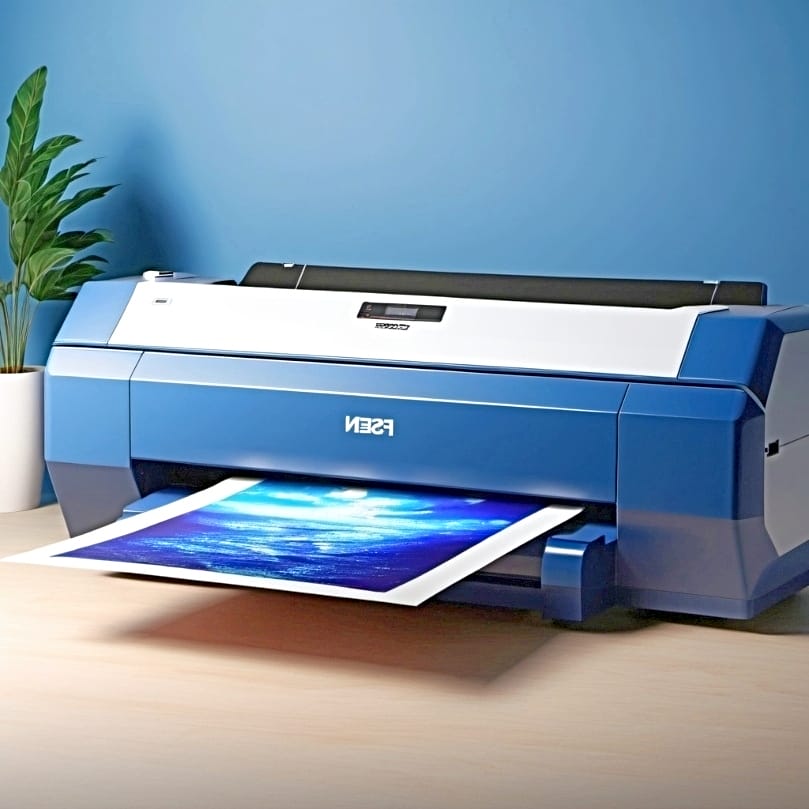
Sublimation printing extends beyond a mere hobby – it holds potential to be a lucrative business venture. By understanding your target audience, creating a blog and posting interesting content, and using color charts for perfect color matching, you can effectively market your sublimation printing services. You can also consider going mobile and participating in pop-up markets to reach a larger audience.
Furthermore, a sublimation printer can significantly contribute to the growth of a printing business by providing a cost-effective means to expand the customer base, diversify the product range, and optimize profitability. By making the most of your sublimation printer, you can turn your passion for printing into a profitable business.
Summary
In conclusion, all over sublimation printing is an exciting and versatile technique that allows for the creation of vibrant, full-color designs on a variety of substrates. Whether you’re a seasoned professional or a beginner, understanding the process, from choosing the right sublimation printer to mastering advanced techniques, can greatly enhance the quality of your prints. With the right knowledge and skills, you can turn your passion for sublimation printing into a profitable business. You are now all set for your sublimation adventure!
Frequently Asked Questions
Can you make sublimation shirts without a sublimation printer?
Yes, you can make sublimation shirts without a sublimation printer using methods such as infusible ink papers, pre-printed sublimation papers, infusible ink pens, and acrylic sublimation paints. Give it a try!
Can you print a sublimation design on a regular printer?
Unfortunately, a regular printer cannot be used for sublimation designs as it requires a dedicated printer with heat-activated ink. However, some Epson EcoTank model printers can be converted for sublimation, but cannot use regular ink.
How do you put a design on a whole shirt?
To put a design on a whole shirt, you can easily do so with an inkjet printer, transfer paper, and an iron. Simply print your design on the transfer paper, cut it out, iron it onto the shirt, and carefully peel off the paper once the shirt has cooled.
What size printer do I need for sublimation shirts?
You will need a printer that can accommodate the size of the T-shirts you want to sublimate. Small format printers can handle up to 8 12 x 14” prints, while large format printers can go up to 13 x 19” or even wider.
What is the importance of choosing the right sublimation printer?
Choosing the right sublimation printer is crucial because it can greatly affect the quality and efficiency of your prints, ensuring vibrant colors and precise designs.
References
- How to use Photoshop for beginners – learn the basics – Adobe. (n.d.-b). https://www.adobe.com/products/photoshop/how-to-use.html
- Learn | Adobe Creative Cloud. (n.d.-b). https://creativecloud.adobe.com/en-x-AFRICA/learn/app/illustrator



